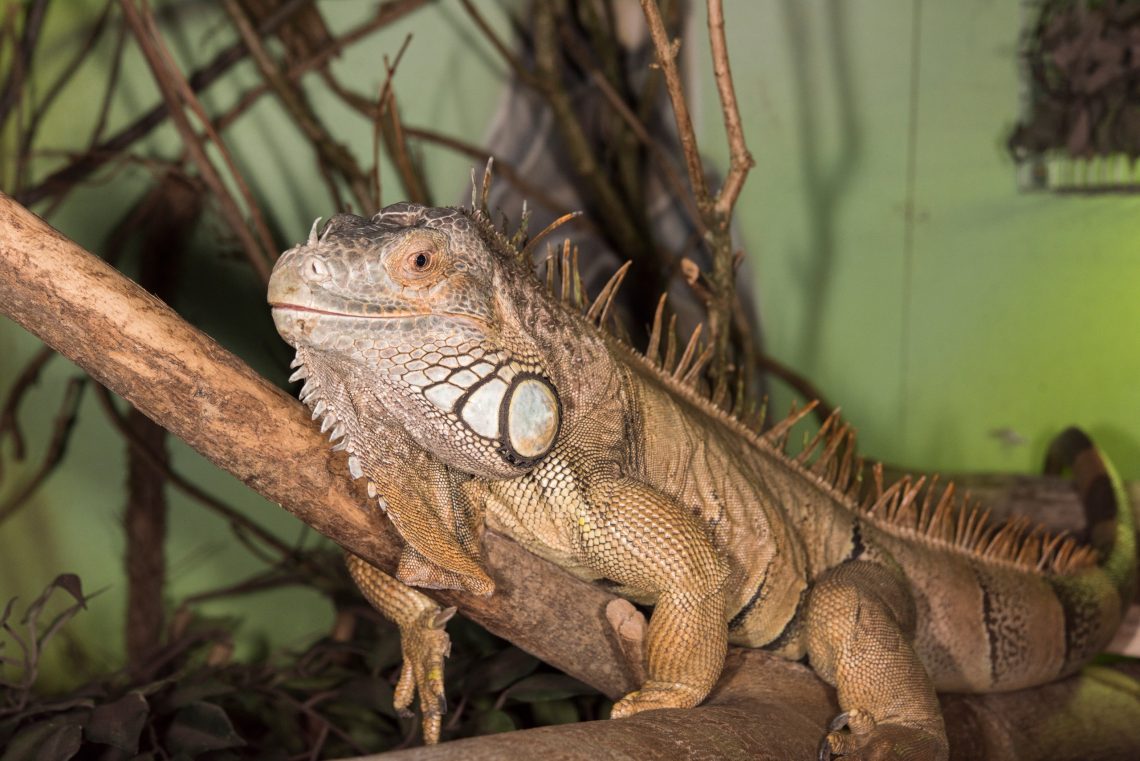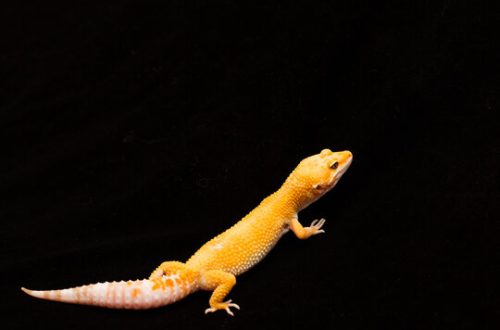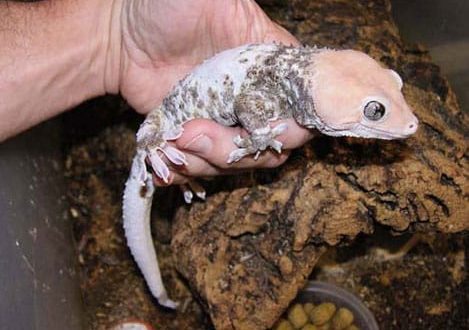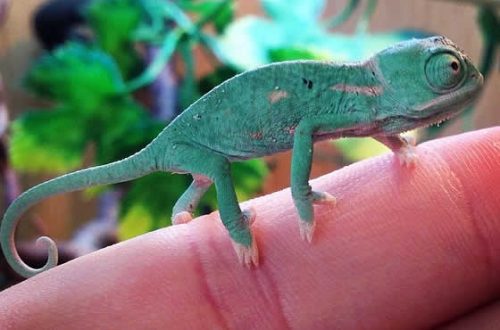
iguana verde
If you dream of having a living dinosaur of impressive size, but at the same time a staunch vegetarian, then the choice will most likely fall on a green iguana. The popularity of this reptile has only been growing recently, but there are no fewer shortcomings in the content.
Before you give in to emotions and run to the pet store, weigh your strengths and capabilities. The first thing people don’t really think about when buying another small green lizard is that in the future their pet can reach a size of about 2 meters with a tail. Such reptiles can live under good conditions for 15–20 years. Accordingly, when buying a young iguana, you need to immediately assess whether you can place a huge terrarium for an adult animal in an apartment or house.
Iguanas are reptiles that spend most of their time in trees. Therefore, the terrarium should be vertical with a set of branches for climbing and a comfortable bench on top. The branches should be about the thickness of the iguana’s body, and the place where it will lie and sleep is better placed higher, it should be spacious and wide. Do not use branches of coniferous plants due to their high content of essential oils with a pungent odor.
The terrarium must be heated, since iguanas, like all reptiles, are dependent on the ambient temperature. A lamp is needed for heating; heating with warm rugs and stones is not suitable for a terrarium, since in nature iguanas do not tend to bask on stones, they sit on branches and take sunbaths. The warmest point should be around 36-38 degrees, the coldest around 24 ºC, and the background temperature in the terrarium should be maintained at 25-27 ºC during the day and 22-24 ºC at night.
The normal existence and healthy development of your pet will be impossible without an ultraviolet lamp for reptiles. Ultraviolet light promotes the production of vitamin D3 and the absorption of calcium. For iguanas, a lamp with a UVB level of 8.0 is quite suitable, which needs to be changed every six months. We install the lamp inside, and not outside the terrarium, since the glass does not transmit ultraviolet light. Both the heat lamp and the UV lamp should be placed about 30 cm away from the iguana and the top branch, and so that it cannot reach them. The lamps should be on all daylight hours, which is 10-12 hours.
As a primer, it is better to give preference to a rubber mat for terrariums. Such artificial green grass looks beautiful and is safe for the pet. Iguanas are extremely curious and love to try everything with their tongue, so they can easily swallow fine soil, which will cause obstruction of the gastrointestinal tract.
For iguanas, high humidity is also important, about 75%. In addition, they are mostly lovers of swimming and taking a warm bath. So in the terrarium it is desirable to make a pond with an area equal to about half the bottom surface. The water temperature should be kept at 26-28 degrees. Most often, these animals prefer to go to the toilet in the water, so you will have to clean and clean it regularly.
Also, to maintain the desired humidity, it is necessary to spray the terrarium with water daily. With a lack of moisture, you may notice that the iguana sneezes, so he gets rid of excess salts. If this happens very often, then there may be deficiencies in feeding or in maintaining moisture.
To warm up the iguana, you can periodically release it from the terrarium. But at the same time, the room should be warm, without drafts. And you have to keep a close eye on your pet. This is a very curious and agile animal, you can be sure that he will taste everything that lies badly and will climb wherever he can. Therefore, in order to avoid injury, poisoning, and ingestion of foreign objects, keep an eye on the iguana on such “walks”.
And now about food. There is conflicting information about whether or not to give iguanas animal protein. But a growing body of research shows that animal protein does more harm than good. In nature, these animals are strict vegetarians and eat insects or small animals rather by mistake. Therefore, the basis of the diet should be leafy greens (about 80%). These are all kinds of salads (Romaine, watercress), clover, dandelions, alfalfa, tops of carrots, beets, radishes, hibiscus, begonias and so on. The rest of the diet can be made up of various vegetables (carrots, pumpkin, cabbage, legumes, zucchini), fruits (figs, pears, apples, mangoes, avocados). Iguanas need to be fed every day, and young ones even several times a day. After feeding, it is better to remove all uneaten food to avoid spoilage. It is better to put water for drinking in a separate bowl, some iguanas like to lick drops when spraying the terrarium, and if the iguana gets enough water from lush greenery, then he can do without drinking. Part of the water iguanas get through the skin when bathing.
Throughout life, it is necessary to include mineral-calcium supplements for reptiles in the diet, since our greens, especially purchased and grown on poor soils, are poor in calcium and other minerals.
The next problem, which not everyone and not always think about before buying an iguana, is the nature of the lizard. Iguanas are very smart animals, with a certain set of habits, and besides, they all have their own individual character. During the period of adaptation to a new place of residence, as well as during the rut, they can show aggression. This sometimes leads to the fact that a person cannot cope and decides to give his animal into more experienced hands. To tame a lizard and achieve its good disposition, you need to devote a lot of time to communication and contact with the iguana. Then, over time, you will begin to understand her habits, habits, emotions, and she will begin to recognize you by voice, appearance, and may begin to show other signs of love for you (some iguanas love to lick their master, some make purring sounds when they see him, and someone likes to sit on his shoulder or knees for a long time and doze off). Often iguanas are choosy in showing their love or dislike. It happens that they do not like strangers, some family members, other animals, they also feel your mood well, so if you are annoyed or angry at something, then it may be wiser to postpone communication. It is difficult to predict in advance with what character the iguana will get to you, especially if you are buying a young lizard. Therefore, show patience, love and care in order to achieve the location and reciprocal love of this interesting animal.
So, you need to remember:
- The iguana is a large lizard, sometimes with a complex character, which requires not only a large vertical terrarium with branches for climbing and resting, but patience and care, which takes a lot of time.
- In the terrarium, it is necessary to observe a temperature gradient. The warmest spot should be around 36-38 ºC, the coldest around 24 ºC, and the background temperature in the terrarium should be maintained at 25-27 ºC during the day and 22-24 ºC at night.
- The terrarium should have an 8.0 UV lamp at a safe distance, which should be changed every 6 months. It should burn during the day for 10-12 hours.
- Humidity should be maintained at 75% by a pond in the terrarium and regular spraying.
- When walking in the apartment, do not leave the iguana unattended, it may get injured or swallow a foreign object.
- The diet of an iguana should be 80% green, 20 percent can be fruits, vegetables, and legumes. But remember that iguanas are vegetarians, and you can’t give them meat, dairy products.





